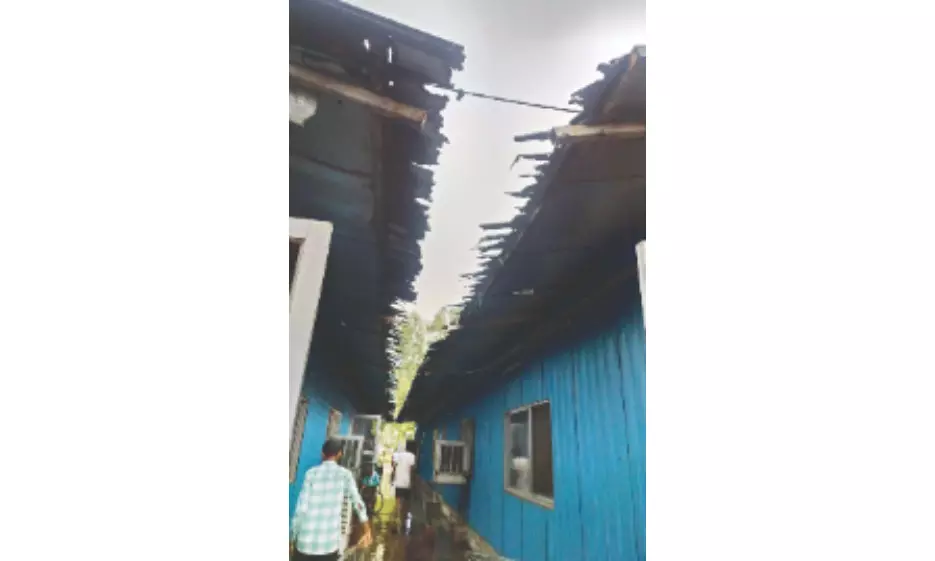‘Don’t take shelter under trees,’ but where do we go? Ask city’s homeless braving extreme climate

NEW DELHI: As Delhi recorded its highest-ever May rainfall with 186.4 mm of precipitation this year — surpassing the previous record of 165 mm set in 2008 — the city’s homeless were left braving the storm with little more than tarpaulins and plastic sheets for cover. The India Meteorological Department (IMD) had issued warnings late Saturday night, urging residents to “avoid open spaces and not take shelter under trees” and to “stay away from weak walls and water bodies.” But for the thousands of people who live under flyovers, beside railway tracks, or on pavements, there were few places to go.
Among them was Anil and his family, who sleep under the Munirka flyover, as staying indoors is a luxury they can’t afford. “We stayed up all night to save our belongings from getting drenched,” he said. “But this is just the beginning of the monsoon. Some days it’s the rain, other days it’s the heat, or authorities pushing us around like luggage.” Delhi has an estimated 3,00,000 homeless population,according to Shahri Adhikar Manch: Begharon Ke Saath (SAM:BKS) many of whom not only face climate extremes but persistent neglect. The city does offer temporary shelter homes — known as rain baseras — and is supposed to provide permanent housing under national schemes.
Jatin Sharma, former Director at the Centre for Equity Studies and now a member of Bharat Gyaan Vigyaan Samiti, works closely with homeless populations through their initiative, ‘Hausla’. The programme runs recovery shelters for people suffering from chronic illnesses, including tuberculosis, HIV and accident injuries. “In the 15 years since the courts linked the right to shelter with the right to food, we have only seen temporary fixes. Permanent shelters are still missing.”
Sharma added that although a national scheme under the National Urban Livelihoods Mission (NULM) was launched in 2013 to provide one permanent shelter per 100,000 people in urban areas, implementation has lagged far behind. “Of the 330–350 permanent shelters proposed in Delhi’s master plan, only 80–82 currently exist. The rest are temporary structures, and many of those have been demolished — especially ahead of the G20 summit,” he said.
In fact, the government has approached the courts again recently, requesting permission to demolish eight more shelter houses, some near transport hubs like Sarai Kale Khan and Anand Vihar ISBT. “They’re offering alternative shelters that are 15–20 km away. How is someone supposed to keep their job or medical treatment intact with such a move?” Sharma questioned. “These areas lack police presence, and are unsafe, especially for elderly people, women, and children.”
Displacement doesn’t just mean losing a roof — it disrupts lives entirely. Most homeless individuals in central or Old Delhi work in small eateries, markets, or serve at weddings. A forced move means lost income and lost connections. “It takes days to recover from these disruptions,” said Rani, who barely manages to make enough for food for children, and most of whose earnings from ragpicking is used up by her husband for smoking and drinking.
More alarming is the impact on health. Rani, said, “he (her husband) suffer from severe chest and abdomen congestion at times but what can be done about it when I barely manage to put food on the plate?” According to Sharma, many homeless individuals in Delhi suffer from chronic lung illnesses, tuberculosis, and mental health issues. “We’ve been running two recovery shelters, and most patients take months to even begin healing,” he said. “Relocation, bad ventilation, overcrowding — all these factors worsen their conditions.”
He added that extreme temperatures increase caloric needs, yet many remain malnourished. Despite the bleak situation, Sharma believes solutions are within reach. “We need permanent shelters, hostels, affordable housing, and wage protection — all part of policy discussions. But the focus remains on high-rises and beautification, not human dignity,” a social worker said. For people like Anil, each rainy night underscores how far Delhi must go to protect its most vulnerable. “We’re not asking for much — just a place to live where we’re not treated like garbage,” he said.



